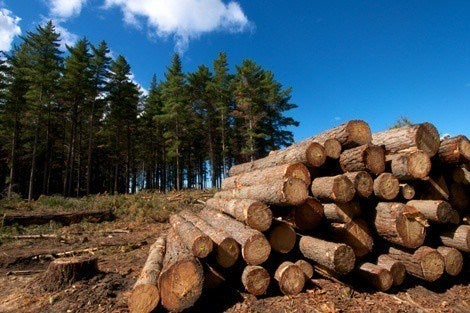November 25, 2013 — Across the globe, there are signs that human activity is causing changes to Earth’s natural systems that may result in risks to health—from Indonesia, where fires used to clear land have been linked to cardiopulmonary disease downwind in Singapore, to the U.S., where the rise in Lyme disease has followed a reduction in mammalian diversity resulting in increased exposure to animals most effective at spreading the disease.
To address this growing concern, Samuel Myers, a research scientist in the Department of Environmental Health at Harvard School of Public Health (HSPH), and colleagues in the HEAL (Health & Ecosystems: Analysis of Linkages) consortium propose a new environmental health research framework focusing on the health effects of ecosystem alteration. Such an effort could provide critical scientific evidence to inform policymaking in land use, conservation, and public health, according to the authors.
Their perspective paper was published November 12, 2013 in the Proceedings of the National Academy of Sciences.
“Human activity is affecting nearly all of the Earth’s natural systems—altering the planet’s land cover, rivers and oceans, climate, and the full range of complex ecological relationships and biogeochemical cycles that have long sustained life on Earth,” said Myers. “These changes and their effects put in question the ability of the planet to provide for a human population now exceeding 7 billion with an exponentially growing demand for goods and services.”
Among the drastic changes that humans have made to the face of the Earth are cutting down roughly half of all temperate and tropical forests, converting nearly half of ice- or desert-free land for crops or farm animals, and impeding the flow of more than 60% of the world’s rivers with dams.
The authors highlight an “ecological transition” whereby societies replace natural infrastructure in the form of complex ecosystems that provide food, safe water, fuel, fiber, and building materials with engineered infrastructure and markets which can also provide these services. But in this transition, the authors note, the poor may be left out, experiencing only the risks associated with degraded natural systems without being able to access improvements associated with engineered infrastructure and markets. Unable to make the transition successfully, they are left increasingly vulnerable to a wide variety of health impacts.
Early efforts to reduce malaria in the Tennessee Valley by draining mosquito-ridden swamps, for example, have resulted in health benefits. And deforestation and irrigation projects in many parts of the world have increased supplies of food and clean energy. However, the negative consequences and differential benefits of these types of projects have recently been coming to light. For example, dams, irrigation projects, and deforestation in Africa and South America may improve food security and clean energy access for some, while increasing the risk of malaria, schistosomiasis, and a variety of other vector-borne diseases for others. Highlighting work being conducted at HSPH, the authors note that declines in the population sizes of both marine and terrestrial wildlife species represent a nutritional crisis for large populations around the globe who depend on wildlife consumption as a critical source of micronutrients in their diets.
The HEAL consortium, organized by the Wildlife Conservation Society, brings together several universities and representatives of public health and environmental conservation organizations to address the urgent need to understand the health effects of ecosystem change.
“With the human transformation of nearly all of Earth’s natural systems rapidly accelerating and growing awareness that these changes are associated with significant public health risks, particularly for the poor and for future generations, there is an urgent need to build a much more robust and comprehensive field of research and practice aimed at managing our systems so as to optimize both conservation and public health outcomes,” said Myers.
Photo: iStockphoto/Neil Bradfield
